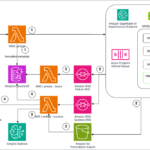
Spencer Platt/Getty Images News
U.S. stocks on Tuesday were mixed, with losses in major retailers countering a rebound in Nvidia (NVDA). The chip giant’s pullback from correction territory helped the benchmark S&P 500 (SP500) and the tech-heavy Nasdaq Composite (COMP:IND) halt a three-day slide each.
The Nasdaq (COMP:IND) advanced 1.10% to 17,689.22 points in midday trade, while the S&P (SP500) added 0.22% to 5,459.98 points.
Both gauges got a lift from a 5% gain in Nvidia (NVDA). After becoming the world’s largest publicly listed firm exactly a week ago and notching a record close, the tech behemoth’s stock fell over 12% in the next three trading sessions and marked a technical correction. That loss saw the company lose nearly $430B in market capitalization.
The Dow (DJI), on the other hand, slipped 0.83% to 39,083.67 points and was on track to snap a five-day win streak. The blue-chip index was weighed down by Home Depot (HD) and Walmart (WMT).
Of the 11 S&P sectors, nine were in the red.
Since the benchmark S&P 500 (SP500) scaled the historic 5,500 points level for the first time ever on June 20, Wall Street’s inexorable bull run has taken a bit of a breather as market participants have locked in their profits.
“Earnings estimates are now accelerating higher, which of course is a very good sign because that is what underpins bull markets, and we’ve been in a bull market since October of 2022. So we’re in month 20 or 21, markets (have) rallied about 55%. A typical bull market will go for 30 months and rally 90%, so there’s no reason to think that there is not still some life left in this bull,” Fidelity’s Jurrien Timmer told CNBC.
Investors this week will get some more insight into global and U.S. consumer trends in the form of scheduled quarterly reports from three major companies – global economic bellwether FedEx (FDX), memory chipmaker Micron Technology (MU) and the world’s largest shoemaker Nike (NKE).
Traders also digested a busy economic calendar on Tuesday. Shortly after the opening bell, two notable readings on home prices arrived. The S&P CoreLogic Case-Shiller’s measure of U.S. home prices hit a new all-time high in April, though the upward trend decelerated slightly from May. Meanwhile, the Federal Housing Finance Agency also reported an increase in home prices in April.
Today’s numbers follow on from a three-course helping of data on the housing market last week that painted a picture of record home prices, a fall in new construction and a supply glut of houses.
Additionally, the Conference Board said consumer confidence ticked down slightly in June from May.
Turning to the fixed-income markets, U.S. Treasury yields were higher ahead of a $69B 2-year note auction. The longer-end 30-year (US30Y) and 10-year yields (US10Y) were both up 2 basis points each to 4.39% and 4.26%, respectively. The shorter-end, more rate-sensitive 2-year yield (US2Y) was also up 2 basis points to 4.76%.
The yield curve garnered some attention on Tuesday.
“A lot has been said about how long the yield curve has been inverted. It’s been inverted for such a long time because labor markets have been tight for a long time. It’ll stay inverted until signs of a slowdown are evident in labor markets and the Fed starts to consider easing,” Francois Trahan, founder of The Macro Institute and Trahan Macro Research, said on X (formerly Twitter).
“At the end of the day, an inversion in the yield curve is a sign that monetary policy is binding. Now, things have changed marginally for labor markets and the yield curve, but the real story likely lies ahead,” Trahan added.
See live data on how Treasury yields are doing across the curve at the Seeking Alpha bond page.










